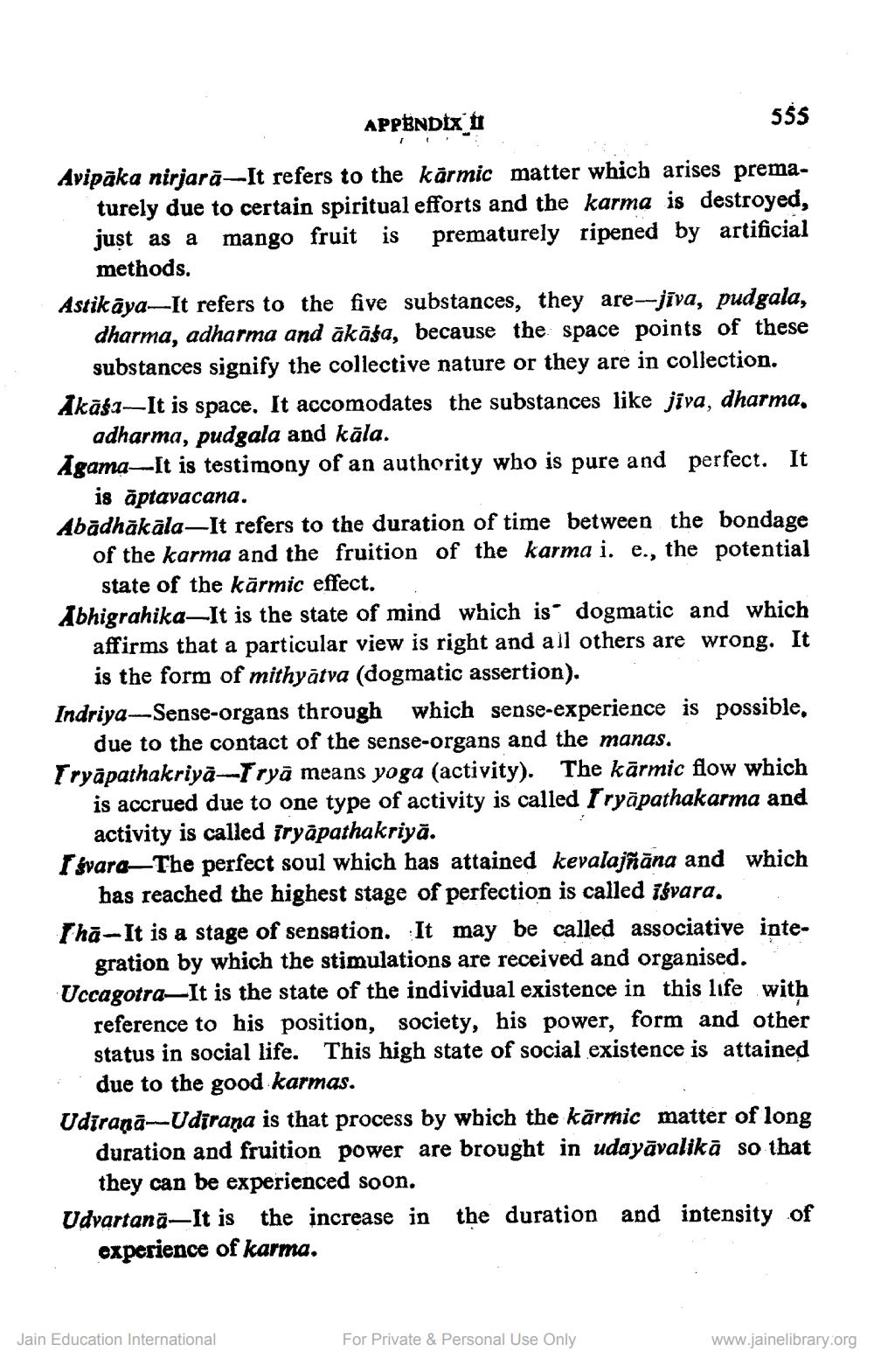________________
APPENDIX
555
Avipaka nirjarā-It refers to the kārmic matter which arises prema
turely due to certain spiritual efforts and the karma is destroyed, just as a mango fruit is prematurely ripened by artificial
methods. Astikāya-It refers to the five substances, they are--jīva, pudgala,
dharma, adharma and ākāša, because the space points of these
substances signify the collective nature or they are in collection. Akāśa-It is space. It accomodates the substances like jiva, dharma,
adharma, pudgala and kāla. Agama--It is testimony of an authority who is pure and perfect. It
is aptavacana. Abadhākāla—It refers to the duration of time between the bondage
of the karma and the fruition of the karma i. e., the potential
state of the kārmic effect. Abhigrahika—It is the state of mind which is dogmatic and which
affirms that a particular view is right and all others are wrong. It
is the form of mithyātva (dogmatic assertion). Indriya-Sense-organs through which sense-experience is possible,
due to the contact of the sense-organs and the manas. Tryāpathakriya-Tryā means yoga (activity). The kārmic flow which
is accrued due to one type of activity is called Iryāpathakarma and
activity is called iryāpathakriya. I svara—The perfect soul which has attained kevalajñāna and which
has reached the highest stage of perfection is called isvara. Thă- It is a stage of sensation. It may be called associative inte
gration by which the stimulations are received and organised. Uccagotra—It is the state of the individual existence in this life with
reference to his position, society, his power, form and other status in social life. This high state of social existence is attained
due to the good karmas. Udiranā--Udirana is that process by which the kārmic matter of long
duration and fruition power are brought in udayāvalikā so that
they can be experienced soon. Udvartanā—It is the increase in the duration and intensity of
experience of karma.
Jain Education International
For Private & Personal Use Only
www.jainelibrary.org




